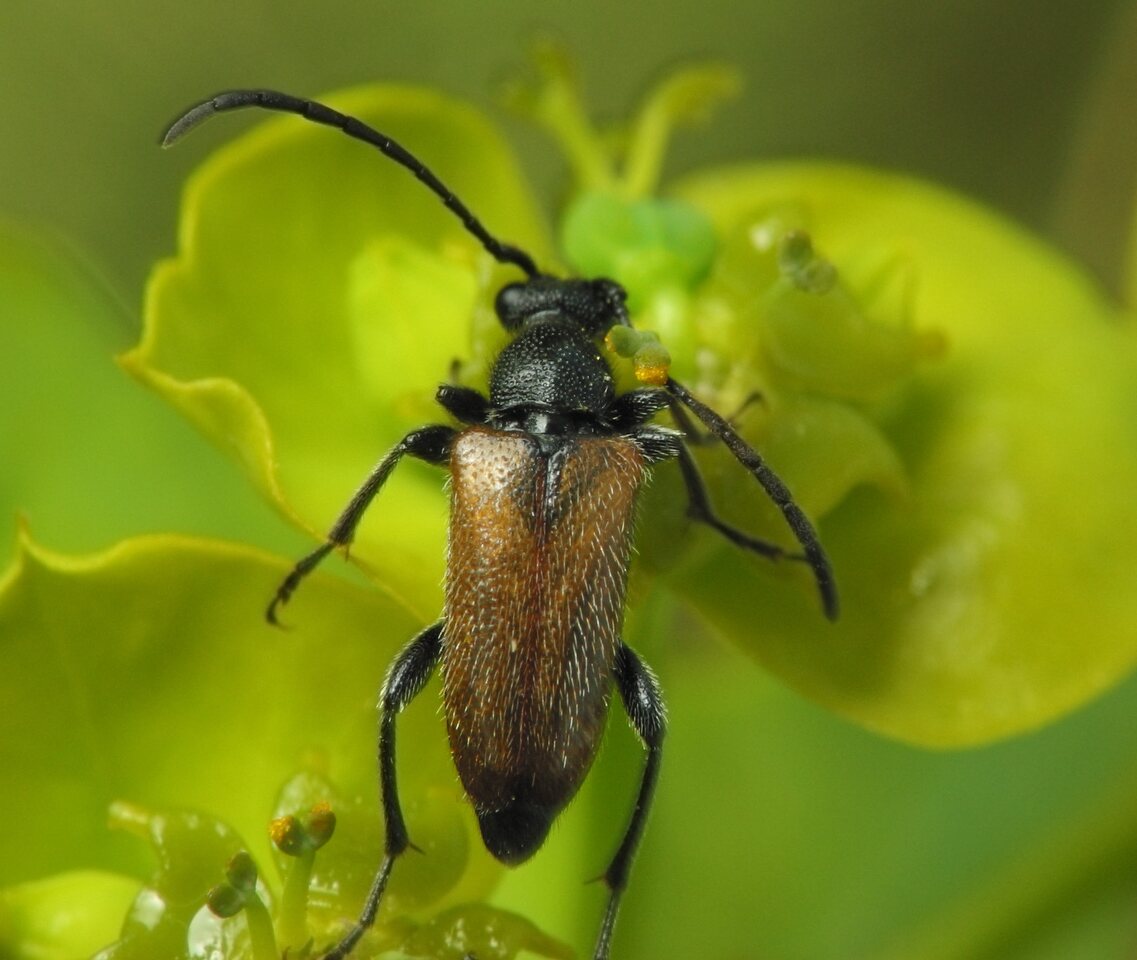
Pseudovadonia livida · mažūninis grybsekis
- Fairy-ring Longhorn Beetle
- Kleiner Halsbock, Bleicher Blütenbock, Gelbflügeliger Halsbock
- mažūninis grybsekis
- zmorsznik mały
- Sidenblombock
Adults can be encountered from May through September, completing their life cycle in two years. They are very common flower-visitors, especially Apiaceae species, feeding on pollen and the nectar. Larvae do not develop in dead wood, as usual in many species of Cerambycidae, but in humus infested by fungus Marasmius oreades (fairy-ring mushroom), feeding on mycelium.
Larvae develop over two years although in warmer southern European areas this may be shortened to a single season, feeding on humus, roots and other subterranean parts of plants as well as hypertrophic mycelia of the fungus which would appear to be an essential part of the diet, in the autumn they burrow down to about 5cm where they will overwinter and resume feeding in the spring. Fully grown larvae construct a cell in the soil and pupate during April and new generation adults appear in May, in some northern European areas the pupal cell is constructed in the autumn and the larvae remain inside until the spring when they will pupate.
Subfamily: Lepturinae · grakštenėnai
‥
1 comment
Add a comment
Comments